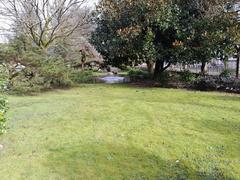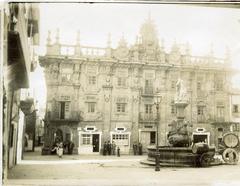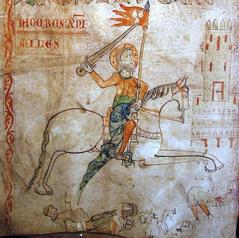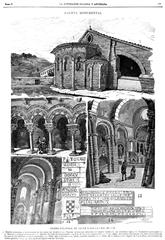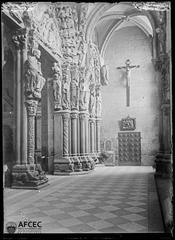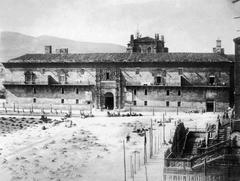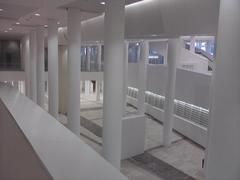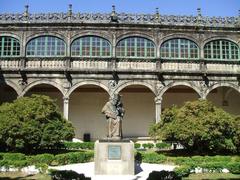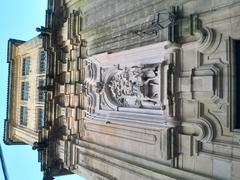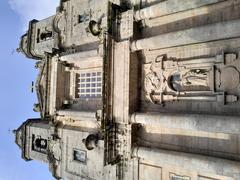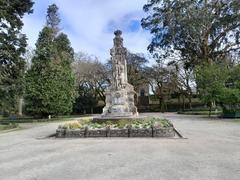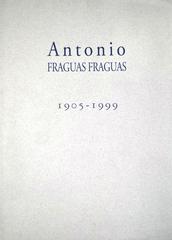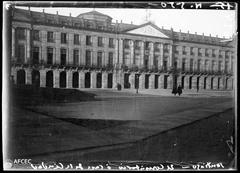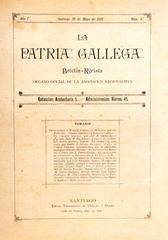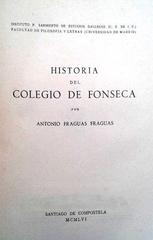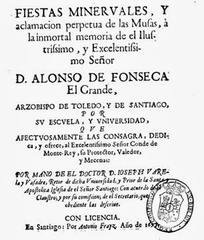
Las Huérfanas, Santiago de Compostela: Visiting Hours, Tickets, and Complete Tourist Guide
Date: 04/07/2025
Introduction: Why Visit Las Huérfanas?
Las Huérfanas, also known as As Orfas in Galician, is a landmark in Santiago de Compostela’s UNESCO-listed historical center. With its roots in the 17th century, Las Huérfanas has stood for centuries as a symbol of faith, charity, and education. Today, it invites visitors to experience its Baroque architecture, tranquil cloisters, and the living legacy of its social mission. This guide provides a detailed look at Las Huérfanas’ history, architecture, visiting hours, accessibility, ticketing, and practical tips to enrich your journey through one of Galicia’s hidden gems.
Historical Background and Significance
Origins and Foundation
Las Huérfanas was established in the early 17th century during a time of religious reform and social need in Spain. Spearheaded by Archbishop Juan de Sanclemente, the complex was founded to provide education, shelter, and spiritual guidance to orphaned and impoverished girls. This initiative was part of the wider Counter-Reformation efforts by the Catholic Church to address social challenges and promote moral values (Santiago Turismo; Academia.edu).
Architectural Development
The Las Huérfanas complex features outstanding Baroque architecture with strong Galician influences. Key architects such as Domingo de Andrade and Fernando de Casas Novoa played pivotal roles in its development. The church, completed in 1671, boasts a striking Rococo main altar by Francisco de Lens and a notable statue of the Immaculate Conception by José Gambino, flanked by Saint Joseph and Saint James (Wikipedia; EAA). Built with local granite and designed with both grandeur and restraint, the architecture reflects the values of its era and location.
Social and Educational Mission
From its inception, Las Huérfanas was dedicated to uplifting orphaned girls, offering them education, shelter, and religious instruction. The institution served as a model of the Church’s compassionate approach to social issues, teaching literacy, practical skills, and spiritual values. This focus on care and education played a vital role in the social development of the city and region (Academia.edu).
Evolution and Preservation
Las Huérfanas adapted to the changing political and social climate of Spain, continuing its educational mission even as secularization increased in the 19th and 20th centuries. The convent now houses the Colegio Nuestra Señora de los Remedios and offers daily Catholic services in its church (Horarios Misa). In 2015, the complex was included in the UNESCO extension of the Camino de Santiago World Heritage designation, underscoring its enduring cultural value (Wikipedia).
Architectural and Artistic Features
Baroque and Local Craftsmanship
Las Huérfanas is a fine example of Galician Baroque. The façade, constructed from local granite, is adorned with restrained ornamentation, while the interior’s Rococo altar and religious iconography create a sense of reverence and beauty. Artistic contributions by local sculptors and artisans can be seen throughout, with motifs such as the scallop shell—a symbol of the Camino de Santiago—woven into the décor (EAA).
Main Structures
- Church: Features a gilded Rococo altar, religious paintings, and period furnishings.
- Cloister: Offers a peaceful courtyard framed by arcaded galleries, illustrating classic monastic design.
- Façade and Entry: Showcases elegant symmetry and subtle Baroque flourishes that blend with the cityscape.
Visitor Information
Location
Las Huérfanas is situated on Rúa das Orfas, in the heart of Santiago’s Old Town—just a short walk from the cathedral and Praza do Obradoiro. Its central location makes it easily accessible on foot from most historic attractions (Turismo de Galicia).
Visiting Hours
- Weekdays: 10:00–13:00 and 16:00–19:00
- Saturdays: 10:00–13:00
- Sundays and Religious Holidays: Closed to general visitors; open only for Mass and religious observances
Hours may change during special events or holidays. Always check the latest schedule before visiting (Horarios Misa; Santiago Turismo).
Tickets and Admission
- Entry: Free (donations welcome)
- Tickets: Not required for church visits; guided tours may have a fee
Accessibility
- Mobility: The main nave is accessible, but some areas (cloister, upper floors) require stairs and may be challenging for those with limited mobility.
- Facilities: Public restrooms and accessible services are available nearby in local cafes and public buildings (Adventure Backpack).
Guided Tours
Guided tours can be arranged by prior appointment, especially for groups or during local festivals. Informational plaques are available in Spanish and Galician; English-language resources may be limited (Turismo de Galicia).
Visitor Etiquette and Photography
- Dress Code: Modest attire (shoulders and knees covered); hats off inside.
- Behavior: Maintain silence, especially during services or prayer times.
- Photography: Permitted in most areas but may be restricted during services; always ask permission.
Safety, Amenities, and Practical Tips
- Safety: Santiago is safe for tourists; be mindful of pickpocketing in crowded areas.
- Amenities: Cafes, bakeries, restaurants, ATMs, and pharmacies are nearby. The Mercado de Abastos is a short walk away for local produce (Turismo de Galicia).
- Accommodation: Options range from paradores and boutique hotels to hostels and pilgrim albergues (Then We Walked).
- Best Visiting Times: Spring and autumn for pleasant weather and fewer crowds; summer is lively during the Feast of St. James (July 25).
Nearby Attractions
- Santiago Cathedral
- Praza do Obradoiro
- Monastery of San Martín Pinario
- Mercado de Abastos
- Plaza de Cervantes
Explore these sites for a comprehensive experience of Santiago’s historical and spiritual landscape (PlanetWare; Tourist Places Guide).
Frequently Asked Questions (FAQ)
Q: What are the Las Huérfanas visiting hours?
A: Weekdays 10:00–13:00 and 16:00–19:00, Saturdays 10:00–13:00. Closed to general visitors on Sundays and religious holidays.
Q: Is there an admission fee or tickets required?
A: No, entry is free; donations are appreciated.
Q: Are guided tours available?
A: Yes, by prior arrangement, especially for groups or during festivals.
Q: Is Las Huérfanas accessible for people with disabilities?
A: Main nave is accessible; other areas may have limited access.
Q: Can I take photographs inside?
A: Yes, except during services or where restricted. Always ask permission.
Cultural and Religious Role
Las Huérfanas has long served as a center for education, charity, and spirituality. Its Baroque church and tranquil cloister reflect Santiago’s ecclesiastical heritage, while the ongoing work of the convent continues to support the local community (Academia.edu). Participation in services is open to all and provides a unique perspective on Galician religious traditions.
Visuals and Media
For a richer experience, explore high-quality images and virtual tours on official tourism websites. Maps showing Las Huérfanas’ location in relation to other city landmarks are highly recommended for orientation.
Summary and Visitor Recommendations
Las Huérfanas encapsulates centuries of Santiago de Compostela’s faith, charity, and artistry. With its free admission, central location, and authentic atmosphere, it is an essential stop for those seeking to understand the city’s historical and spiritual fabric. Plan ahead, respect the sacred space, and combine your visit with nearby attractions for a memorable journey.
For updates, guided tours, and audio content, download the Audiala app and follow us on social media for the latest travel tips and stories about Santiago de Compostela’s historical sites.
References and External Links
- Convento Igrexa e Colexio das Orfas, Santiago Turismo
- Las Huérfanas, Wikipedia
- Pobres y desamparadas: Las instituciones de huérfanas en Santiago de Compostela, siglos XVII-XIX, Academia.edu
- Santiago de Compostela Cathedral Spain, EAA
- Why is Santiago de Compostela a Historically Important City?, Walk the Camino
- Iglesia de Las Huérfanas, Horarios Misa
- Tourist Attractions in Santiago de Compostela, PlanetWare
- Hidden Gems and Must-Do Activities in Santiago de Compostela, Tourist Secrets
- Santiago de Compostela City Guide, Nomads Travel Guide
- Que Visitar: Santiago de Compostela, Turismo de Galicia
- Adventure Backpack Santiago de Compostela Itinerary
- Then We Walked: Worth Visiting Santiago de Compostela
- Tourist Places Guide Santiago de Compostela
- Unanchored Passenger: Things to Do in Santiago de Compostela
- Best Time to Visit Santiago de Compostela














